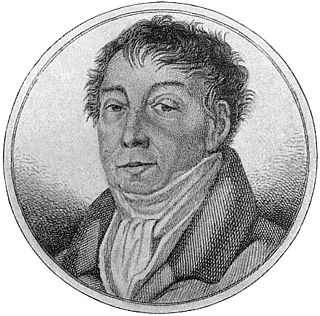
Luigi Marchesi was an Italian castrato singer, one of the most prominent and charismatic to appear in Europe during the second half of the eighteenth century.
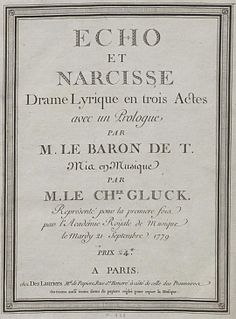
Écho et Narcisse is a 1779 drame lyrique in three acts, the last original opera written by Christoph Willibald Gluck, his sixth for the French stage. The libretto, written by Louis-Théodore de Tschudi, tells the story of the love between Echo and Narcissus.

Giulio Sabino is a dramma per musica in three acts by Giuseppe Sarti. The libretto was by Pietro Giovannini.

Fra i due litiganti il terzo gode is a dramma giocoso in two acts by Giuseppe Sarti. The libretto was after Carlo Goldoni's Le nozze.

Le gelosie villane is a dramma giocoso in three acts by Giuseppe Sarti. The libretto was by Tommaso Grandi. It was also known as Il feudatorio, Il feudatorio burlato and I contadini bizzari. It was also set by Pasquale Anfossi.

Giuseppe Aprile was an Italian castrato singer and music teacher. He was also known as 'Sciroletto' or 'Scirolino'.
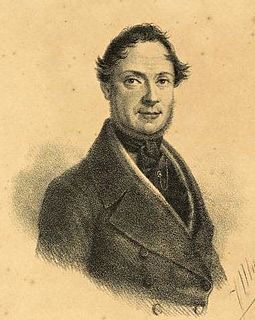
Giulietta e Romeo is an opera in two acts by the Italian composer Nicola Vaccai. The libretto, by Felice Romani, is based on the tragedy of the same name by Luigi Scevola and, ultimately, on the 1530 novella of the same name by Luigi Da Porto. It was first performed at the Teatro alla Canobbiana, Milan, on 31 October 1825. It was Vaccai's last major success, although he wrote another nine operas, and is rarely performed in its full version today.
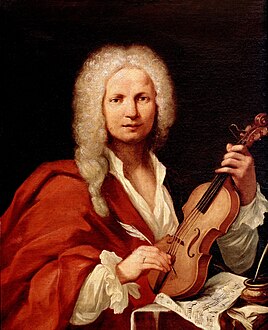
L'incoronazione di Dario is a dramma per musica by Antonio Vivaldi with an Italian libretto by Adriano Morselli. The opera was first performed at the Teatro Sant'Angelo in Venice on 23 January 1717.

Scanderbeg is an opera in three acts composed by Antonio Vivaldi to an Italian libretto by Antonio Salvi. It was first performed at the Teatro della Pergola in Florence on 22 June 1718 to mark the re-opening of the theatre to public performances. While the libretto has been preserved, only fragments of the original score remain.
Giovanni de Gamerra was an Italian cleric, a playwright, and a poet. He is best known as a prolific librettist.
La sposa fedele is an opera buffa in three acts by Pietro Alessandro Guglielmi. The Italian libretto was by Pietro Chiari.
Gennaro Astarita was an Italian composer, mainly of operas. The place of his birth is unknown, although he was active in Naples for many years. He began his operatic career in 1765, collaborating with Niccolò Piccinni in the writing of the opera L'orfana insidiata. He became the maestro di cappella in Naples in 1770.
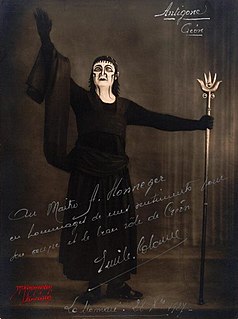
Antigone is an opera in three acts by Arthur Honegger to a French libretto by Jean Cocteau based on the tragedy Antigone by Sophocles. Honegger composed the opera between 1924 and 1927. It premiered on 28 December 1927 at the Théâtre Royal de la Monnaie with sets designed by Pablo Picasso and costumes by Coco Chanel.

The Teatro Donizetti is an opera house in Bergamo, Italy. Built in the 1780s using a design by architect Giovanni Francesco Lucchini, the theatre was originally referred to as either the Teatro Nuovo or Teatro di Fiera. The first opera to be mounted at the theatre, Giuseppe Sarti's Medonte, re di Epiro, was in 1784 while the opera house was still under construction. The official opening of the house, under the name the Teatro Riccardi, did not occur until 24 August 1791 with a production of Pietro Metastasio's Didone abbandonata set to music by multiple composers, including Ferdinando Bertoni, Giacomo Rampini, Johann Gottlieb Naumann, Giuseppe Gazzaniga, and Giovanni Paisiello.
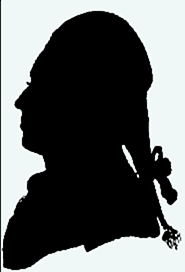
Vincenzo Calvesi was an Italian operatic tenor and impresario. A skillful lyric tenor, he began his career performing in opera houses in Italy during the 1770s. He was active in Dresden in 1782 to 1783 and then spent most of his time performing in Vienna from 1785 to 1794. He is best remembered today for creating the role of Ferrando in the world premiere of Wolfgang Amadeus Mozart's Così fan tutte in 1790. That same year the Viennese publication Grundsätze zur Theaterkritik described him as "one of the best tenors from Italy…with a voice naturally sweet, pleasant and sonorous." He was later active in Rome as an impresario up until 1811.
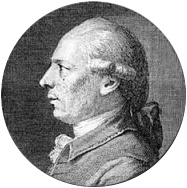
Ernelinde, princesse de Norvège is a three-act operatic tragédie lyrique, by the French composer François-André Danican Philidor. The libretto was by Antoine-Alexandre-Henri Poinsinet, after Francesco Silvani's opera libretto La fede tradita, e vendicata.

Siroe, or Siroe re di Persia, is an opera seria in three acts by Johann Adolph Hasse. The libretto was by Metastasio. As with many of the latter's libretti, Siroe was also set by Hasse's contemporaries, for example Vinci, Vivaldi and Handel.

La villanella rapita is an opera giocosa in two acts by Francesco Bianchi. The libretto was by Giovanni Bertati.

Alonso e Cora is an opera seria in three acts by Francesco Bianchi. The libretto was by Giuseppe Foppa, after Ferdinando Moretti's Idalide, o sia La vergine del sole, as used by Giuseppe Sarti in Milan in 1783. The original source of this text was in turn Jean François Marmontel's Les Incas, ou La destruction de l'empire du Pérou (1777).
Giovanni Ansani was an Italian tenor and composer.












